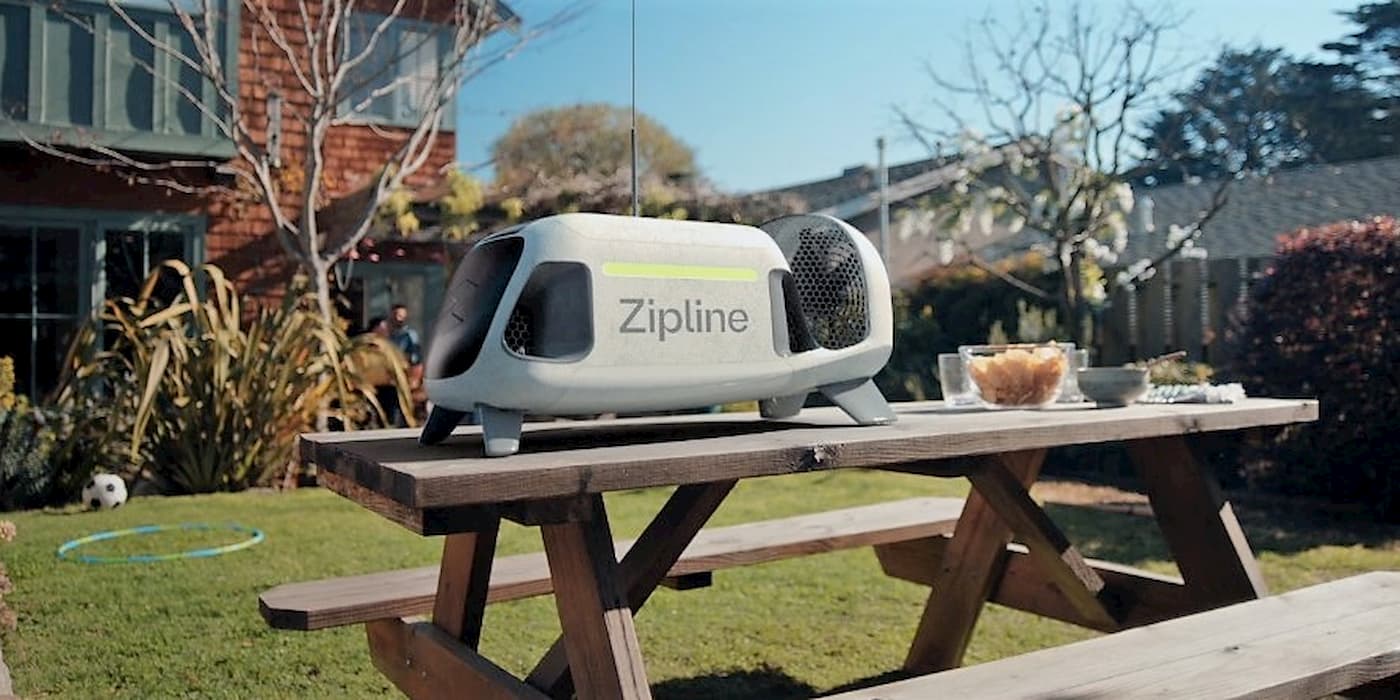
Say goodbye to delivery delays due to traffic and weather. California-based startup Zipline is revolutionizing how we receive goods with its ultra-precise electric autonomous delivery drones called Zips.
The company’s latest P2 electric drones are designed for fast, practically silent, precise autonomous home delivery that looks like they are straight out of a Disney movie.
Zipline showcased its newest Platform 2 (P2) Wednesday, claiming it’s expected to complete deliveries seven times faster than traditional delivery via car.
The Zips can complete a 10-mile delivery in around 10 minutes carrying six to eight pounds, which would easily beat the usual over-hour delivery time from most leading delivery services (at least in my area).
CEO and co-founder of Zipline, Keller Rinaudo Cliffton, couldn’t have said it better, stating:
Over the last decade, global demand for instant delivery has skyrocketed, but the technology we’re using to deliver is 100 years old. We’re still using the same 3,000-pound, gas combustion vehicles, driven by humans, to make billions of deliveries that usually weigh less than 5 pounds. It’s slow, it’s expensive, and it’s terrible for the planet.
He added Zipline’s new service is changing the game and is the “closest thing to teleportation ever created” with a smooth, ultrafast, and “truly magical” autonomous delivery system.

How Zipline’s autonomous electric delivery drones work
The company says, unlike other drones, Zips fly over 300 feet. When arriving at its arrival point, it hovers at the altitude while its autonomous delivery droid lets down a tether, steering it to a precise planned location.
To make it possible, Zipline uses several innovative technologies, such as:
- Aerospace Sensing: Multiple sensing technologies that can monitor 360 degrees of airspace at day or night and in all weather conditions.
- Fleet Deconfliction: An autonomous fleet management system to limit congestion and optimize travel.
- Localization: An onboard navigation system to determine location down to a single centimeter.
- Predictive Weather: A high-fidelity, low altitude first-of-its-kind weather forecasting tech so Zips can avoid severe weather.
- Onboard Maps: Integrated maps help the Zips navigate complex airspace and terrain while optimizing energy efficiency.
Ziplines electric autonomous delivery drones have already attracted several businesses across the healthcare and restaurant industries, two markets that could immensely benefit from faster, efficient delivery.
For example, Sweetgreen, an American restaurant known for its healthy salads, is partnering with Zipline to connect its customers with real food in the US.
More importantly, Sweetgreen customers can get their orders by “Zip delivery” using 97% less energy than standard vehicle delivery.
Several healthcare companies will use the service to speed up prescription deliveries, in some cases even doubling it.

Zipline’s autonomous drone delivery impacts
Zipline conducts deliveries across five countries – Rwanda, Ghana, the US, Nigeria, and Japan, with Kenya and Côte D’Ivoire coming soon.
The company has delivered over five million items globally, completing a delivery every 90 seconds.
Each flight produces around 30 times fewer CO2 emissions than the average electric vehicle and up to 98% fewer emissions than a gas-powered one.
Ziplines services are used for delivering blood, vaccines, COVID supplies, prescriptions, e-commerce goods, human and animal health products, and food.
Several studies have already highlighted the benefits of Zipline services.
- The first study published in The Lancet shows the company’s drone delivery resulted in a 67% reduction in blood waste across Rwanda.
- The second, published by the Bill and Melinda Gates Foundation, found Zipline was increasing access to healthcare and equity in the healthcare system.
- A third study from researchers at Wharton found a reduction of Rwanda in-hospital maternal deaths due to postpartum hemorrhage by 88% due to the company’s delivery system.
What’s next
Zipline makes it easy for businesses to integrate the service with an end-to-end solution, including dual docking, charging hardware, software that easily integrates with inventory and ordering systems (to speed up the delivery process further), and an app that can track its drones down to the second.
The delivery service makes a perfect option for restaurants, pharmacies, and doctor’s offices, with easy docking and charging hardware.
The company has already flown 40 million commercial miles through 500,000 commercial flights and plans to conduct another 10,000 test flights this year, with customer deliveries beginning shortly after.
Zipline says it has received Part 135 certification and is authorized to complete the longest-range, on-demand commercial drone flights in the US. It has also recently received FAA approval to use its autonomous detect and avoid system.
By the end of 2023, Zipline expects to complete over one million deliveries, and by 2025, the company forecasts to operate more flights each year than most airlines.
FTC: We use income earning auto affiliate links. More.

Comments